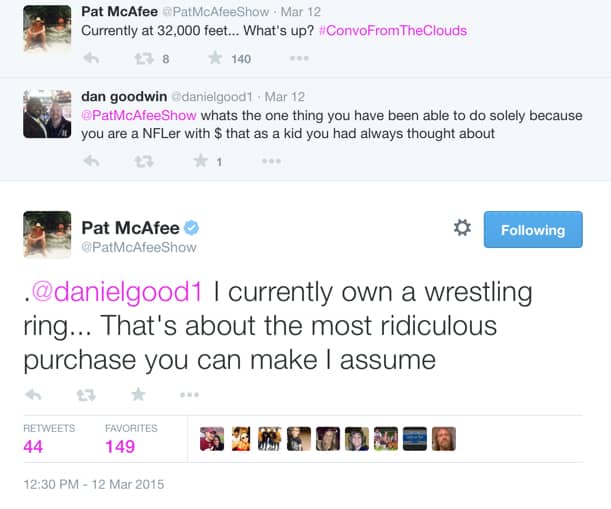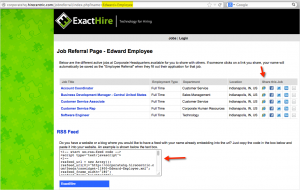It’s March in Indianapolis, Indiana. That means two things: wildly fluctuating temperatures (March 6: 2℉…March 11: 65 ℉); and basketball (this year will mark the 7th time since 1940 that Indy has hosted the NCAA Men’s Final Four). It’s through hosting events like the Final Four–and that spectacle in Speedway–that Indianapolis earned the nickname “Amateur Sports Capital of the World.” However, increasingly, the word “amateur” is becoming unnecessary.
Last week, I had the privilege of listening to three leaders in the Indianapolis professional sports scene. Rob Laycock of the Indiana Pacers, Dan Plumlee of the Indianapolis Colts, and Tom Dunmore of the Indy Eleven spoke at New Economy New Rules–a monthly event organized by TechPoint. The event seeks to introduce new ideas about how business is done today and how it will be done tomorrow, often with an emphasis on technology as a catalyst for change. Accordingly, the discussion topics at this event were less about on-field action and more about evolving technologies that enhance the fan experience and fill seats.
The talk was exciting for me in my career as a digital marketer–these guys have metrics on everything–and eye-opening from my perspective as a sports fan–who knew they could track bathroom traffic at stadiums in real-time?! But how can Human Resources departments–large and small–incorporate technology into their operations?
Start With A Clear Destination
Before adopting new technology, an organization should first have a clear understanding of its business objectives and goals. From there, it’s a matter of exploring and selecting technologies that will provide employees with value-added assistance in meeting important objectives–those that will directly impact business goals. In varying degrees and ways, each sports organization uses technology to meet important business objectives. However, all three emphasized the importance of using technology to engage the community, with the goal of cultivating passionate, loyal fans to fill their seats.
In the world of Human Resources, our organizations can use technology to engage job applicants and fill our “open seats” with passionate, loyal new hires too. Let’s explore how this can be done by taking a look at how these sports organizations engage and cultivate fans.
Engaging Applicants-More Than Filling Seats
A common theme throughout the conversation was that, yes, the goal is to fill the seats, but focusing on gross tickets sales as the sole indicator of success is a mistake. For these organizations, it’s more about building relationships with fans for the long haul. In fact, Mr. Laycock likened it to dating, wherein a team gradually develops a closer, stronger relationship with a fan; the end-goal is to gain and maintain a fan’s lifelong loyalty, which is hopefully expressed through annual ticket purchases.
For HR Departments, we are looking to find the right match for our organization too–although this is speed dating, and we have many significant others, and…well let’s just stop the metaphor there. The point is: we want to attract talented people to our organization who stay and become passionate brand ambassadors. These individuals will value both our organization and the relationship they have with it.
Does your hiring process seek to find, hire, and onboard individuals who will be passionate, loyal fans of your organization? If not, you’ll be looking to refill your seats real soon, and your organization will suffer for it. To avoid this, consider investing in an Applicant Tracking System that streamlines the hiring process and increases applicant engagement through automated job postings to multiple job boards, integrated social media sharing, and timely, personalized applicant status updates and follow-up requests. By utilizing this technology, you’ll provide a more welcoming hiring process for the applicant and have more time to meaningful interact with job candidates–your future fans.
Engaging Applicants-Highlight Star Players
With the right perspective on what your hiring goal is (hiring passionate, loyal fans of your organization) and a strong foundation of hiring technology in place (a robust Applicant Tracking System), you will be ready to attract top talent to your team. To do this, you must impress job seekers with how awesome it is to be a part of your team. It’s important that you do this in a way that is–and is perceived to be–authentic. There’s no better way to do this than to highlight your star players.
Pat McAfee of the Indianapolis Colts has over 300,000 followers on Twitter. His tweets inform, entertain, and ultimately galvanize the Colts fan-base. The content isn’t always about his place of employment, but this works to the Colts’ advantage as it helps in reaching new fans–especially younger ones. Do members of your team have a platform from which to tell their story?

McAfee engages fans through Twitter.
Job seekers need to experience it to believe it. If your organization is only providing a list of “Why ‘ABC Corp.’ Is A Great Place To Work”, then you’re missing out on an opportunity to engage job seekers who are looking to bring their talents to a special place. Highlight your current employees via your website and social media to illustrate not just what your organization is about, but who it’s about. If you already employ passionate, loyal fans of your organization, then you’ll likely attract the same.
Engaging Applicants-A FANtastic Experience

- This is FANtastic!
- Courtesy of totalprosports.com
We know that an Applicant Tracking System can provide an HR Department with the time and features needed to make a positive impression on job applicants. But what happens after you’ve hired and filled the open seat? What is the new hire’s experience?
Onboarding a new hire is equivalent to welcoming a new fan to their first game. The Pacers, Colts, and Indy Eleven don’t stop engaging fans once the ticket is sold. They continue strengthening their fan relationships with the goal of cultivating life-long fans. These organizations use technology to accomplish this where it makes sense, but these are simply tools to convey a sentiment: you belong and you are appreciated.
How does your organization provide a fantastic experience for new hires? This question, of course, is part of the larger topics of “work culture” and “employer brand”. But a simple way to create a pleasant experience for your new employees is to provide them with a highly organized and personalized onboarding experience. And again, this can be accomplished with the help of technology…Onboarding Software.
Just as a new fan’s first-game experience should not be marred by long waits at the gate, concession stand, and restroom; a new hire’s first day should not be marked by completion of forms, redundant tasks, and an office supply scavenger hunt. Onboarding Software can streamline the common tasks associated with the onboarding process and eliminate the need for new hires to fill out stacks and stacks of forms.
When your organization’s new employees are not swamped with an endless number of mind-numbing tasks or confused about what form is needed next, they are free to interact with new colleagues and begin building a relationship with your organization. This also provides the organization with the opportunity to be creative with how it welcomes and orientates new employees. An onboarding like this will show appreciation for new hires, and it contributes to their sense of belonging.
New Economy New Rules
In today’s competitive economy, finding and hiring talented individuals to fill your open seats (and stay in them) is vital for an organization’s continued growth and profitability. Successful organizations like the Colts, Indy Eleven, and Pacers invest in technology to efficiently reach business objectives, HR departments can do the same by embracing technology as a tool to improve the hiring and onboarding processes. It’s important to know that an investment in hiring technology will certainly create efficiencies in operations; however, more importantly, it will support a powerfully engaging experience for applicants and new hires–one that will cultivate passionate, loyal employees–and fans–of your organization.
ExactHire offers hiring technology that helps small to medium sized organizations scale for growth. Our HireCentric Applicant Tracking System features social media and job board integration to maximize an organization’s recruitment operations. Additionally, our Onboarding Software helps ensure that new hires enjoy a FANtastic experience with your organization. Learn more by contacting a member of our team today!
Image credit: Game Over  by Andrew Malone (contact)
by Andrew Malone (contact)



